Golden Triangle Tour
- Duration : 11Night 12Days
- Elevation : 170 m
- Group Size : Min 4
- Tour:
4.7 (350 ) Reviews
★★★★★ 4.7/5
Golden Triangle Tour Package in India is symbol of Indian Tourism on World Tourism Map. From every corner of World million of tourists want visit India and spend their vacations in Golden Triangle Tours in India. Delhi, Agra and Jaipur are the 3 main city of the Golden Triangle tour package. Taj Mahal a beautiful structure on love, which describes the passion of human being regarding their love one. Delhi is the capital of Modern India and mixture of Old and New structure of Indian History. Jaipur is another beautiful city of this Golden Triangle Tour Package in India, in which you discover Culture, Tradition and Heritage of India.
Depart for sightseeing tour of Old Delhi – Drive past Red Fort - built in red sand stone walls of Lal Quila, the Red Fort extend for 2 km and vary in height from 18m on the river side to 33m on the city side. Shah Jahan started construction of the massive fort in 1638 and it was completed in 1648. The Red Fort dates from the vary peak of Mughal power. Also enjoy Rickshaw ride from Red Fort to Jama Mosque The Mughal reign from Delhi was a short one, however Aurangzeb was the first and the last emperor to rule from here, Jama Masjid - the Great mosque of Old Delhi’s both the largest and the final architectural extravagance of Shah Jahan. Begun in 1644, the mosque was not completed until 1658. It has three gateways, four angle towers and two minarets standing 40m high and constructed of altering vertical strips of red sandstone and white marble and Raj Ghat – cremation site of Mahatma Gandhi – the Father of Nation;. Afternoon sightseeing tour of New Delhi begins with a drive past Safdarjang’s Tomb (1753 AD) while we are on the way to the Qutab Minar (1193 A.D.). This striking medieval tower of victory, built by the slave dynasty, is 73 m high. Within the Qutab complex, amidst the ruins of Quwat-ul-Islam mosque, stands the Iron pillar which has stood the vagaries of weather and has not rusted for over 1500 years. Continue your tour to visit the Humayun’s Tomb. Later drive through the Embassy area, Diplomatic enclave, stop for a quick photo shoot at India Gate and Rashtrapati Bhawan (Presidential Estate formerly Viceroy’s House) and Connaught Place, New Delhi’s main shopping area. Places in Delhi that we will cover in 1 days:- 1. President House 2. India Gate 3. Jama Masjid Mosque 4. Rajghat 5. Cannaught place 6. Qutub Minar
Agra – The ancient city once the capital of the Mughal empire in the 16th and 17th century, depicts a gorgeous panorama of majestic architectural creations and a rich tradition of art and culture. Agra houses one of seven wonders of the world, the marble symphony of Emperor Shah Jahan - “The Taj Mahal”. Discover the dazzling creations of their craftsmen in other architectural marvels in Agra, the quintessential Mughal City. Afternoon visit the Baby taj and Sunset at Taj Mahal (closed every Friday) - built by the Mughal Emperor Shah Jahan as a mausoleum for his beloved queen Mumtaz Mahal in 1648 on the bank of the river Yamuna. The symmetrical, white- marble building consists of an arch-shaped doorway topped by a large dome and decorative spires. Also visit Agra Fort, the most beautiful 17th century Mughal architecture. In 1565, Akbar began to build the Red Fort with its high red sandstone walls: inside, south, is the Jahangiri Mahal or Palace of Jahangir, built by Akbar to the north, the Pearl Mosque, built by Shah Jahan. The "Khas Mahal" which forms three pavilions, one discovers a beautiful view of the Yamuna and the Taj Mahal. Places in Agra that we will cover in 1 days:- 1. Taj Mahal in Morning for sun Rise 2. Agra Fort 3. Taj Mahal in Evening for sunset
The city of Jaipur was founded in 1727 by Jai Singh II, the Raja of Amer who ruled from 1699 to 1743. He planned to shift his capital from Amer, 11 kilometres (7 mi) from Jaipur to accommodate the growing population and increasing scarcity of water.Jai Singh consulted several books on architecture and architects while planning the layout of Jaipur. Under the architectural guidance of Vidyadhar Bhattacharya, Jaipur was planned based on the principles of Vastu shastra and Shilpa Shastra The construction of the city began in 1726 and took four years to complete the major roads, offices and palaces. The city was divided into nine blocks, two of which contained the state buildings and palaces, with the remaining seven allotted to the public. Huge ramparts were built, pierced by seven fortified gates Jaipur is a standout amongst the most socially rich legacy urban areas in India. Established in the year 1727, the city is named after Maharaja Jai Singh II who was the primary organizer of this city. He was a Kachhwaha Rajput and ruled the region in the vicinity of 1699 and 1744. During the rule of Sawai Ram Singh I, the city was painted pink to welcome H.R.H. Albert Edward, Prince of Wales (who later became King Edward VII, Emperor of India), in 1876. Many of the avenues remained painted in pink, giving Jaipur a distinctive appearance and the epithet Pink city. In the 19th century, the city grew rapidly and by 1900 it had a population of 160,000. The wide boulevards were paved and its chief industries were the working of metals and marble, fostered by a school of art founded in 1868.The city had three colleges, including a Sanskrit college (1865) and a girls' school (1867) opened during the reign of the Maharaja Ram Singh Large areas of the city including the airport were flooded in August 1981, resulting in the death of eight people and much damage to the city's Dravyavati River. The floods were caused by three days of cloud burst that produced more rain than the annual average. Places in Jaipur that we will cover in 1 days:- 1. Amer Fort at Morning 2. Water Palace 3. Wind Palace 4. City Palace 5. Jantar mantar
Jodhpur is a city in the Thar Desert of the northwest Indian state of Rajasthan. Its 15th-century Mehrangarh Fort is a former palace that’s now a museum, displaying weapons, paintings and elaborate royal palanquins (sedan chairs). Set on on a rocky outcrop, the fort overlooks the walled city, where many buildings are painted the city’s iconic shade of blue. Places in Jodhpur that we will cover in 1 day:- 1. Mehrangarh Fort 2. Clock Tower 3. King Palace
Ranakpur is a village located in Desuri tehsil near Sadri town in the Pali district of Rajasthan in western India. It is located between Jodhpur and Udaipur. 162 km from Jodhpur and 91 km from Udaipur, in a valley on the western side of the Aravalli Range. The Nearest Railway Station to reach Ranakpur is Falna Railway station. Ranakpur is one among the most famous places to visit in Pali, Rajasthan. Ranakpur is easily accessed by road from Udaipur.Along with magnificent architecture and numerous pillars, the place is also famous for large population of monkeys that live in and around the place. The ladies of the town donated 90 ounces of gold to the construction of the temple. Ranakpur is widely known for its marble Jain temple, said to be the most spectacular of the Jain temples. There is also a small Sun temple Place in Ranakpur that we will cover in 1 day:- Jain Temple
Udaipur, formerly the capital of the Mewar Kingdom, is a city in the western Indian state of Rajasthan. Founded by Maharana Udai Singh II in 1559, it’s set around a series of artificial lakes and is known for its lavish royal residences. City Palace, overlooking Lake Pichola, is a monumental complex of 11 palaces, courtyards and gardens, famed for its intricate peacock mosaics. Places in Udaipur that we will cover in 1 days:- 1. City Palace 2. Jagdish Temple 3. Saheli ki Badi 4. Boat Ride at Lake Pichola in evening
09.00 AM- Morning, drive from Jodhpur to Pushkar (290 km/6 hours) After having the lunch depart for Brahma's Temple, Also called the Jagatpita Brahma Mandir, this temple is located near to the Pushkar Lake. It is one of the few Brahma temples remaining in the country and is amongst the rare places to visit in Pushkarthe place of worship was built in the fourteenth century. Constructed of marble and stone, it has a unique architecture along with the majestic red pinnacle. then proceed for Pushkar Lake, Surrounded by more than fifty bathing ghats, this lake is located in the Ajmer district of Rajasthan and Local City Sightseeing. DINNER & OVERNIGHT AT THE HOTEL
Back to Delhi
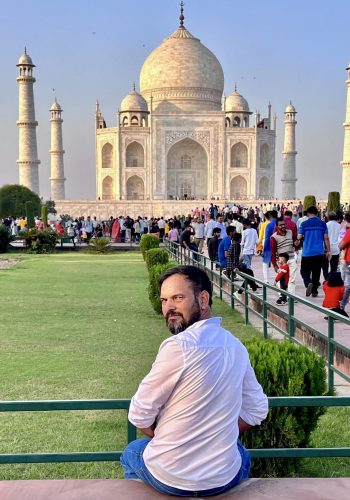
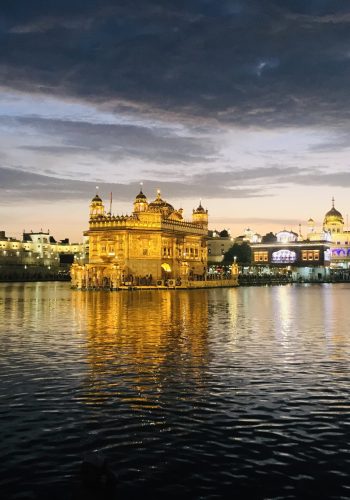
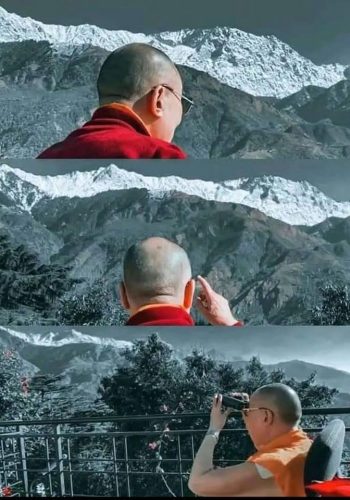
Since 2005, Manu Adventures India has been dedicated to providing unforgettable outdoor experiences for over 500,000 individuals of all ages. Whether it be a day trip or a two-week vacation in the majestic Himalayas, we strive to create lasting memories for our clients.
As a reputable travel company based in Dharamsala, we take pride in our professional ownership and well-managed team of young experts. Specializing in trekking, adventure activities, holiday tours, jeep safaris, and paragliding in the picturesque hills of North India, we are committed to delivering top-notch services to our valued customers.
Manu Adventures India is a renowned provider of a wide range of adventure activities, including trekking, hiking, river rafting, and paragliding. Our services are designed to cater to the thrill-seekers and nature enthusiasts who seek unforgettable experiences in the great outdoors.
At our company, safety is our top priority on all of our Trekking tours. We are dedicated to ensuring the well-being of our clients at all times. Our team has extensive experience in conducting rescue operations, further demonstrating our commitment to safety.
We provide highly professional and friendly travel and adventure services, boasting a successful track record of over 15 years of operation in North India.
EXCELLENT131 reviews Resort159064136001 July 2024Triund trekking experience Great booking and trekking experience. They are very flexible and the team of guides is excellent. Highly recommended:)
Resort159064136001 July 2024Triund trekking experience Great booking and trekking experience. They are very flexible and the team of guides is excellent. Highly recommended:) Adrienne W12 March 2024Manu is awesome! Manu is very generous, hospitable and helpful. We enjoyed his company and found him very easy to talk to and relate with.
Adrienne W12 March 2024Manu is awesome! Manu is very generous, hospitable and helpful. We enjoyed his company and found him very easy to talk to and relate with. Clare H7 March 2024A perfect day tailored just for us We had the most wonderful day with Sandip walking up from McCleodGanj and over the top and down into his own village where his mother most kindly made us a cup of tea in their family hut over a fire. We also saw a wedding party procession near a river. Sandip also took us past a dedicated prayer flag area in the woods. We saw the start of rhodendrons beginning to flower. A perfect day.
Clare H7 March 2024A perfect day tailored just for us We had the most wonderful day with Sandip walking up from McCleodGanj and over the top and down into his own village where his mother most kindly made us a cup of tea in their family hut over a fire. We also saw a wedding party procession near a river. Sandip also took us past a dedicated prayer flag area in the woods. We saw the start of rhodendrons beginning to flower. A perfect day. Explore1927258026822 February 2024Once in lifetime Manu Adventures India were fantastic. The team are all so helpful and supportive. If you're considering trekking here this is definitely the way to go....
Explore1927258026822 February 2024Once in lifetime Manu Adventures India were fantastic. The team are all so helpful and supportive. If you're considering trekking here this is definitely the way to go.... Jacob N15 December 20233 friends & Triund overnight trek Great exercise, fresh air and beautiful trek. Started out in town, ascended up the hill then eventually up the mountain. Mountain Ponies carried all the gear while we had light backpacks! Excellent tour guide host Manu. Participants Need to be physically prepared even for the Triund trek. Overnight stay in tent was excellent temperature very cold though we did our homework and kept warm. Food, company & experience to a great evel highly recommended to others .
Jacob N15 December 20233 friends & Triund overnight trek Great exercise, fresh air and beautiful trek. Started out in town, ascended up the hill then eventually up the mountain. Mountain Ponies carried all the gear while we had light backpacks! Excellent tour guide host Manu. Participants Need to be physically prepared even for the Triund trek. Overnight stay in tent was excellent temperature very cold though we did our homework and kept warm. Food, company & experience to a great evel highly recommended to others . Daniel J13 December 2023Wonderful time with friends Excellent experience. We had lots of fun. It is a beautiful walk with incredible views throughout the journey. Manu and the crew are super friendly, accommodating and professional. We were looked after with amazing meals and warm camping gear. Highly recommended. The walk is stunning and doing it with a professional guide like Manu will make your trip much easier.
Daniel J13 December 2023Wonderful time with friends Excellent experience. We had lots of fun. It is a beautiful walk with incredible views throughout the journey. Manu and the crew are super friendly, accommodating and professional. We were looked after with amazing meals and warm camping gear. Highly recommended. The walk is stunning and doing it with a professional guide like Manu will make your trip much easier. Pioneer2596147746814 November 2023Amazing First Time Trek Had the most amazing time. As it was my first time trekking, I was apprehensive about many things. But the Manu adventures made sure I didn’t have anything to worry about. The tour guide was competent and allowed us to trek at our pace. The camping location was beautiful and the host was amazing. The food was great too.
Pioneer2596147746814 November 2023Amazing First Time Trek Had the most amazing time. As it was my first time trekking, I was apprehensive about many things. But the Manu adventures made sure I didn’t have anything to worry about. The tour guide was competent and allowed us to trek at our pace. The camping location was beautiful and the host was amazing. The food was great too. Jet0387232234511 November 2023Amazing experience We had an amazing time trekking to laka glacier! Manu was a great guide, he's a lot of fun and has so much knowledge about the area. Playing cricket at 3300metres was a highlight! Ranu's campsite was really lovely, incredible views and tasty, hearty food! Both Manu and Ranu took really good care of us and we'd really reccomend trekking with them, it's great value for money as well.
Jet0387232234511 November 2023Amazing experience We had an amazing time trekking to laka glacier! Manu was a great guide, he's a lot of fun and has so much knowledge about the area. Playing cricket at 3300metres was a highlight! Ranu's campsite was really lovely, incredible views and tasty, hearty food! Both Manu and Ranu took really good care of us and we'd really reccomend trekking with them, it's great value for money as well. Camper191655141769 November 2023Trustworthy and Excellent Excellent experience. Vaishalee from Manu adventures has been super helpful in planning our stay in Dharamshala. Suraj was our guide who was brilliant. I was traveling with my 9 year old and he was extremely patient and helped us cover the trek. Very reliable and trustworthy worthy company. They also helped me choose a very good hotel within the main city. Thank you Manu Adventures you really made my stay here memorable.
Camper191655141769 November 2023Trustworthy and Excellent Excellent experience. Vaishalee from Manu adventures has been super helpful in planning our stay in Dharamshala. Suraj was our guide who was brilliant. I was traveling with my 9 year old and he was extremely patient and helped us cover the trek. Very reliable and trustworthy worthy company. They also helped me choose a very good hotel within the main city. Thank you Manu Adventures you really made my stay here memorable. Susan A8 November 2023Trek and Sightseeing Great trek. Great food. Great friends. Great fun. Fantastic 10 days 5 days trek, 5 sight seeing and travel.Load more
Susan A8 November 2023Trek and Sightseeing Great trek. Great food. Great friends. Great fun. Fantastic 10 days 5 days trek, 5 sight seeing and travel.Load more
EXCELLENT668 reviews dhananjayan krishnamoorthy8 August 2024**Triund Trek with Manu Adventures** We recently embarked on the Triund trek, organized by Manu Adventures, and it was an experience to remember. The trek, led by Rajat, was a moderate one, perfectly suited for both seasoned trekkers and beginners. The breathtaking views of the Dhauladhar range and the well-maintained trail made the journey enjoyable and rewarding. Manu Adventures did a commendable job in organizing the trek, ensuring that all basic amenities were taken care of. The stay was at a picturesque location, offering a comfortable and restful night . Rajat's leadership and knowledge of the terrain added an extra layer of safety and enjoyment to the trek. Overall, it was a well-organized trek, by Manu Adventures.
dhananjayan krishnamoorthy8 August 2024**Triund Trek with Manu Adventures** We recently embarked on the Triund trek, organized by Manu Adventures, and it was an experience to remember. The trek, led by Rajat, was a moderate one, perfectly suited for both seasoned trekkers and beginners. The breathtaking views of the Dhauladhar range and the well-maintained trail made the journey enjoyable and rewarding. Manu Adventures did a commendable job in organizing the trek, ensuring that all basic amenities were taken care of. The stay was at a picturesque location, offering a comfortable and restful night . Rajat's leadership and knowledge of the terrain added an extra layer of safety and enjoyment to the trek. Overall, it was a well-organized trek, by Manu Adventures. Ranjit Kaur25 July 2024Best company in India
Ranjit Kaur25 July 2024Best company in India Eddie Smith27 June 2024Could not fault this experience it's by far the best thing I've done in India so far. It was a good hike to Indraha pass, tough at times and demanded some good fitness and good mental fortitude. Manu was exceptional with the service he provided and how fast I was able to get a slot to go hiking (the next day). I did the 3 night 4 day package and that included a solid breakfast, packed lunch and cooked hot dinner in the evenings. My guide Shivam was a top bloke, very very good guide and hiker and felt incredibly safe when hiking some difficult passes with him. Always attentive and an all round top bloke. Wish I could give more than 5 stars. Don't hesitate in booking onto this.
Eddie Smith27 June 2024Could not fault this experience it's by far the best thing I've done in India so far. It was a good hike to Indraha pass, tough at times and demanded some good fitness and good mental fortitude. Manu was exceptional with the service he provided and how fast I was able to get a slot to go hiking (the next day). I did the 3 night 4 day package and that included a solid breakfast, packed lunch and cooked hot dinner in the evenings. My guide Shivam was a top bloke, very very good guide and hiker and felt incredibly safe when hiking some difficult passes with him. Always attentive and an all round top bloke. Wish I could give more than 5 stars. Don't hesitate in booking onto this. Subash Anchalose21 June 2024Excellent service. Professional service and friendly staff
Subash Anchalose21 June 2024Excellent service. Professional service and friendly staff sumita sharma18 June 2024Had a awesome experience on Triund and Laka glacier with Manu Adventures team. Team also helped us customize trek based on our level. Our guide Mr Manu Raghuvanshi was very helpful and supportive and was with us throughout the trek. Tents and sleeping bags were clean and toilets were there at both the camp sites at Leta village and Laka glacier. Food was also good. Would highly recommend to fellow hikers.
sumita sharma18 June 2024Had a awesome experience on Triund and Laka glacier with Manu Adventures team. Team also helped us customize trek based on our level. Our guide Mr Manu Raghuvanshi was very helpful and supportive and was with us throughout the trek. Tents and sleeping bags were clean and toilets were there at both the camp sites at Leta village and Laka glacier. Food was also good. Would highly recommend to fellow hikers. Dr Neha Sheokand17 June 2024Best experience with Manu adventures. No false promises Honest and punctual . Camp stay at Leta villa was very nicely arranged.
Dr Neha Sheokand17 June 2024Best experience with Manu adventures. No false promises Honest and punctual . Camp stay at Leta villa was very nicely arranged. Seema Awasthi8 June 2024Well organised overnight trekking trip by Manu Adventures for Triund. Vaishali was extremely helpful in organising everything for our group. Thanks to the guide, Rajat, who left no stone unturned to make our trekking experience memorable.
Seema Awasthi8 June 2024Well organised overnight trekking trip by Manu Adventures for Triund. Vaishali was extremely helpful in organising everything for our group. Thanks to the guide, Rajat, who left no stone unturned to make our trekking experience memorable. Meghna Baid31 May 2024We went for our truind trek through Manu Adventures. Our guide Rohit was very good. He made sure that we are comfortable during the trek whenever we faced ittle discomfort. The camps on the truind top were good and neat. On our request jain food was served during dinner and breakfast. Would recommend Manu Adventures and Rohit for your trek. On request we could start our trek from Gallu temple.
Meghna Baid31 May 2024We went for our truind trek through Manu Adventures. Our guide Rohit was very good. He made sure that we are comfortable during the trek whenever we faced ittle discomfort. The camps on the truind top were good and neat. On our request jain food was served during dinner and breakfast. Would recommend Manu Adventures and Rohit for your trek. On request we could start our trek from Gallu temple. Salini Purkayastha31 May 2024Great overall experience and support from Manu Adventures Team. The base camp, the staff there, the food throughout the trek was very good. Special mention to our guide Mr. Rohit for being warm and motivating and making this trek truly memorableLoad more
Salini Purkayastha31 May 2024Great overall experience and support from Manu Adventures Team. The base camp, the staff there, the food throughout the trek was very good. Special mention to our guide Mr. Rohit for being warm and motivating and making this trek truly memorableLoad more
The best times to visit India generally fall between October to March, when the weather is cooler and more pleasant for traveling. However, the ideal time may vary based on the region you plan to visit.
India offers various modes of transportation, including domestic flights, trains, buses, and taxis. The Indian Railways is a popular choice for long distances, while local buses and auto-rickshaws are commonly used for short trips within cities.
Traveling in India is generally safe for tourists. However, it is advisable to stay vigilant, follow local guidelines, and take standard safety precautions, such as avoiding isolated areas at night and securing your belongings.
Train tickets can be booked online through the Indian Railways website or through various travel booking platforms. It is recommended to book tickets in advance, especially during peak travel seasons.
To fully experience Indian cuisine, consider dining at local restaurants, trying street food, and participating in cooking classes. Each region has its unique dishes, so be adventurous and explore the local flavors.
Hiring a local guide can enhance your travel experience by providing insights into local culture, history, and attractions. It is especially beneficial in cities with rich heritage and complex histories.
It is important to respect local customs and traditions. Dress modestly, especially when visiting religious sites, and be mindful of local practices, such as removing shoes before entering homes or temples.
Before traveling to India, it is recommended to consult with a healthcare professional regarding vaccinations and health precautions. Carry a basic first aid kit and be cautious with drinking water and street food.
Credit cards are widely accepted in urban areas and major tourist destinations, but it is advisable to carry cash for small purchases and in rural areas. ATMs are available in most cities.
Pack lightweight, breathable clothing suitable for the climate, comfortable shoes for walking, and a travel adapter for electronics. Also, consider bringing a reusable water bottle and a basic first aid kit.
While photography is generally allowed, certain places, particularly religious sites and military installations, may have restrictions. Always ask for permission when photographing people and be respectful of local customs.
India is home to numerous must-visit destinations, including the Taj Mahal in Agra, Jaipur's palaces, Kerala's backwaters, the beaches of Goa, and the spiritual city of Varanasi and Dharamshala. Each region offers unique experiences and attractions.

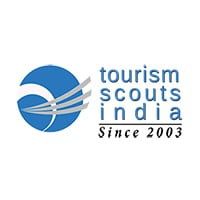



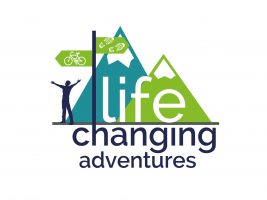


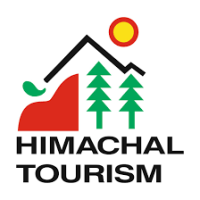



Manu Adventures India is a well known travel company in Dharamsala. Since 2005, we’ve helped more than 900,000 people of all ages enjoy the best outdoor experience of their lives. Whether it’s for one day or a two-week vacation, in the Himalayas.